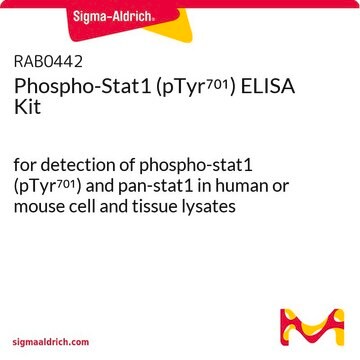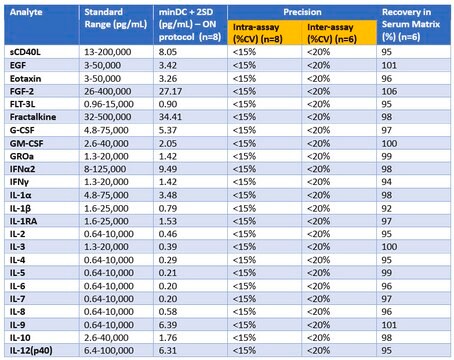RAB0639
Human CHI3L1 / Chitinase-3-like Protein 1 ELISA Kit
About This Item
Polecane produkty
reaktywność gatunkowa
human
opakowanie
kit of 96 wells (12 strips x 8 wells)
metody
ELISA: suitable
moc wejściowa
sample type plasma
sample type serum
sample type cell culture supernatant(s)
assay range
inter-assay cv: <12%
intra-assay cv: <10%
sensitivity: 6 pg/mL
standard curve range: 6.14-1500 pg/mL
metoda wykrywania
colorimetric
Warunki transportu
wet ice
temp. przechowywania
−20°C
informacje o genach
human ... CHI3L1(1116)
Powiązane kategorie
Opis ogólny
Zastosowanie
Please refer to the attached General ELISA KIT Procedure (sandwich, competitive & Indirect ELISA)
Inne uwagi
Please type the word sample in the text box provided for lot number.
Hasło ostrzegawcze
Warning
Zwroty wskazujące rodzaj zagrożenia
Zwroty wskazujące środki ostrożności
Klasyfikacja zagrożeń
Met. Corr. 1
Kod klasy składowania
8A - Combustible corrosive hazardous materials
Temperatura zapłonu (°F)
Not applicable
Temperatura zapłonu (°C)
Not applicable
Wykazy regulacyjne
Wykazy regulacyjne dotyczą głównie produktów chemicznych. Można w nich podawać ograniczoną liczbę informacji na temat produktów niechemicznych. Brak wpisu oznacza, że żaden ze składników nie znajduje się w wykazie. Użytkownik odpowiada za zagwarantowanie bezpiecznego i zgodnego z prawem stosowania produktu.
EU REACH Annex XVII (Restriction List)
Certyfikaty analizy (CoA)
Poszukaj Certyfikaty analizy (CoA), wpisując numer partii/serii produktów. Numery serii i partii można znaleźć na etykiecie produktu po słowach „seria” lub „partia”.
Masz już ten produkt?
Dokumenty związane z niedawno zakupionymi produktami zostały zamieszczone w Bibliotece dokumentów.
Nasz zespół naukowców ma doświadczenie we wszystkich obszarach badań, w tym w naukach przyrodniczych, materiałoznawstwie, syntezie chemicznej, chromatografii, analityce i wielu innych dziedzinach.
Skontaktuj się z zespołem ds. pomocy technicznej









